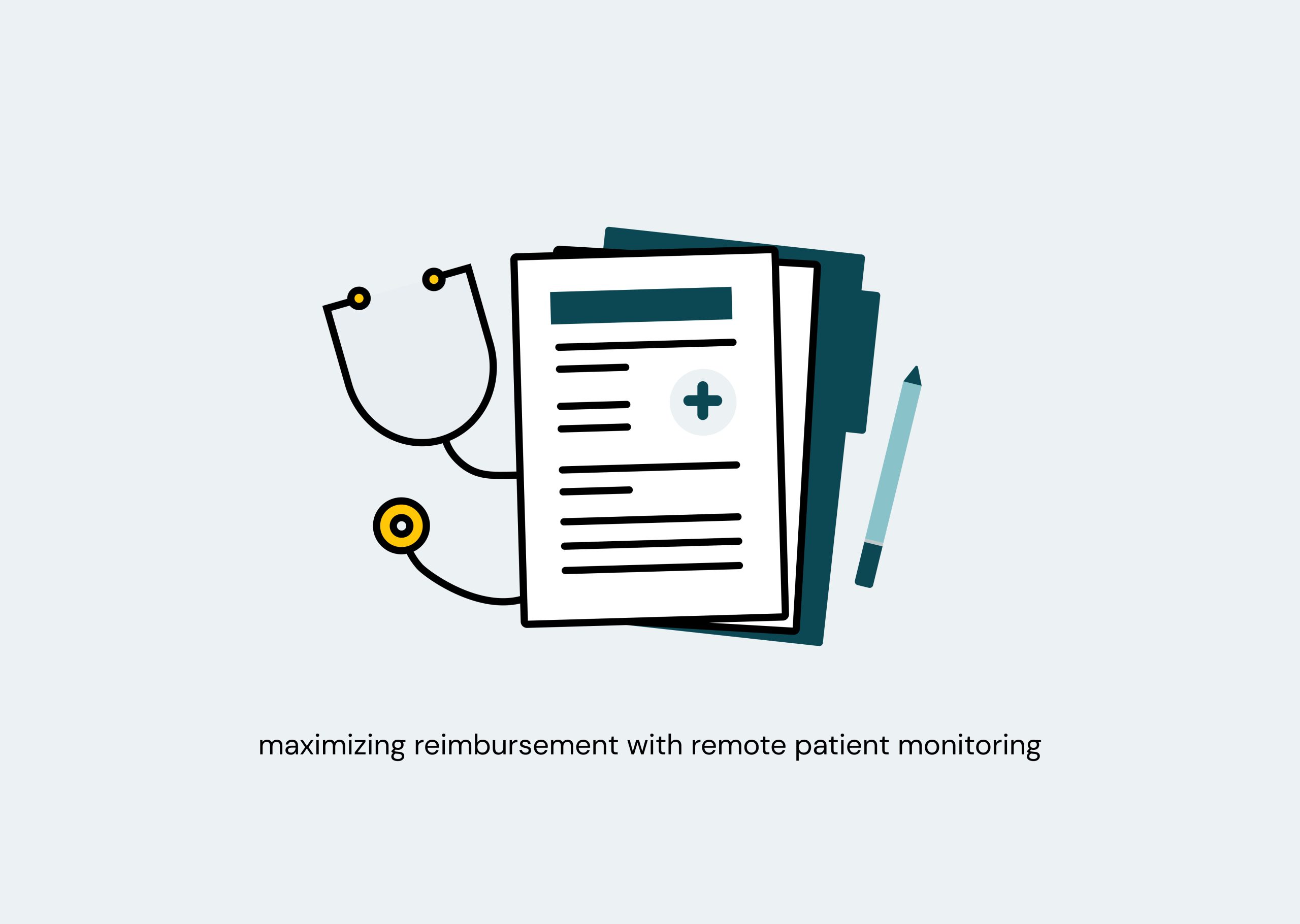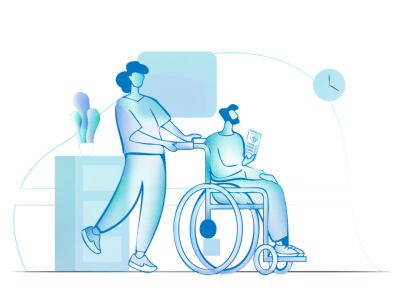
Maximizing Reimbursement with Remote Patient Monitoring: A Comprehensive Guide to CPT Codes 99453 and 99454
In this series, we will delve into the world of RPM and explore the different CPT codes that are relevant to providers looking to develop their own remote monitoring programs.
RPM programs have gained significant traction in recent years, driven by factors such as the COVID-19 pandemic, technological advancements, and increased adoption by doctors and patients. In response to this growing demand, the Centers for Medicare and Medicaid Services (CMS) have introduced several reimbursement codes for coverage and payment of remote monitoring services.
The five CPT codes that are most relevant to providers interested in RPM programs are:
- 99453
- 99454
- 99457
- 99458
- 99091
In this blog post, we will focus on the first two codes on the list, 99453 and 99454, and discuss what these codes entail and important considerations when billing for them.
CPT codes 99453 and 99454 reimburse for the expenses associated with providing remote monitoring services used to collect remote physiologic parameters, such as weight, blood pressure, pulse oximetry, and respiratory flow rate. This includes the cost of the monitoring device and its distribution to the patient.
99453 is a one-time reimbursement code related to setup, which covers the effort spent on educating the patient about the monitoring device that they will be using for their specific condition. It can only be used once per episode of care per patient, regardless of the number of remote monitoring devices used or the number of providers caring for the patient.
On the other hand, 99454 is related to the supply of the monitoring device(s) to be used for remote monitoring. The device must be ordered by the patient’s physician or other qualified healthcare provider and must be defined as a medical device by the FDA. Unlike 99453, 99454 can be used more than once and can be reported every 30 days. However, it can only be billed by one practitioner, once per 30-day period, per patient, regardless of the number of devices used.
When billing for 99453 and 99454, it’s important to consider the average national Medicare payment amount, which is $18.48 for 99453 and $55.77 for 99454, according to the 2022 Medicare Physician Fee Schedule. However, reimbursement rates may vary depending on the commercial payer or geographic region, so it’s recommended to consult with local payer representatives or a local Medicare Administrative Contractor (MAC) for accurate reimbursement rates.
Another important consideration is the minimum 16-day requirement for billing. In order to bill for 99453 and 99454, data from the RPM device must be transmitted for a minimum of 16 days within a 30-day period. The patient must be actively engaged in taking their measurements, and the data must be electronically collected and transmitted, not self-reported by the patient.
It’s also worth noting that there is an exception to the 16-day rule for patients with suspected or confirmed cases of COVID-19. During the COVID-19 public health emergency (PHE), at least 2 days of monitoring are required for billing 99453 or 99454 for these patients.
Based on our best practices, we recommend meeting with patients in person for the initial setup of the RPM device. This allows for hands-on coaching and demonstration of the device, which can be particularly beneficial for patients who may be less experienced with technological devices. In the long-term, this can save time and positively impact patient engagement and retention.
Educate Patients on Proper Device Usage
It’s essential to educate patients on how to properly use the remote monitoring device, including how to take accurate measurements and transmit the data. This education can be done during the initial in-person setup or through remote sessions if necessary. Provide written instructions and resources for patients to refer to, and encourage them to ask questions and seek clarification as needed. Proper education and understanding of device usage will ensure that patients are actively engaged in the monitoring process and can transmit accurate data for billing purposes.
Ensure Compliance with Minimum Data Transmission Requirements
As mentioned earlier, in order to bill for CPT codes 99453 and 99454, the data from the remote monitoring device must be transmitted for a minimum of 16 days in a 30-day period, unless an exception applies (such as the COVID-19 exception during the public health emergency). It’s crucial to monitor patients’ compliance with data transmission and follow up with them regularly to ensure they are using the device consistently and transmitting the data as required. This will help meet the billing requirements and ensure accurate reimbursement.
Document and Code Appropriately
Proper documentation and coding are crucial for successful reimbursement. Document the details of the initial in-person setup, patient education, device distribution, and any other relevant information in the patient’s medical record. Use the appropriate CPT codes, modifiers, and other billing codes as required by CMS or other payers. Double-check the coding and documentation to ensure accuracy and compliance with billing guidelines.
Stay Updated with CMS and Payer Requirements
Remote patient monitoring and reimbursement codes are constantly evolving, and it’s important to stay updated with the latest CMS and payer requirements. Regularly check for updates on billing guidelines, coverage policies, reimbursement rates, and any changes in documentation or coding requirements. This will ensure that your remote monitoring program remains compliant and maximizes reimbursement.
In conclusion, CPT codes 99453 and 99454 are essential for providers looking to develop their own remote patient monitoring programs. By understanding the requirements, educating patients, ensuring compliance with data transmission, documenting and coding appropriately, and staying updated with CMS and payer requirements, providers can successfully implement and bill for remote monitoring services. Stay tuned for Part 2 and Part 3 of our series on remote patient monitoring CPT codes for more in-depth information and frequently asked questions.
Vianova is a leading healthcare technology company that offers remote patient monitoring solutions to providers, helping them deliver high-quality care and improve patient outcomes. With Vianova’s innovative platform, providers can easily implement and manage remote monitoring programs, streamline workflows, and optimize reimbursement. Stay ahead of the curve with Vianova and transform your practice with the power of remote patient monitoring.



FEEL FREE TO DROP US A LINE.